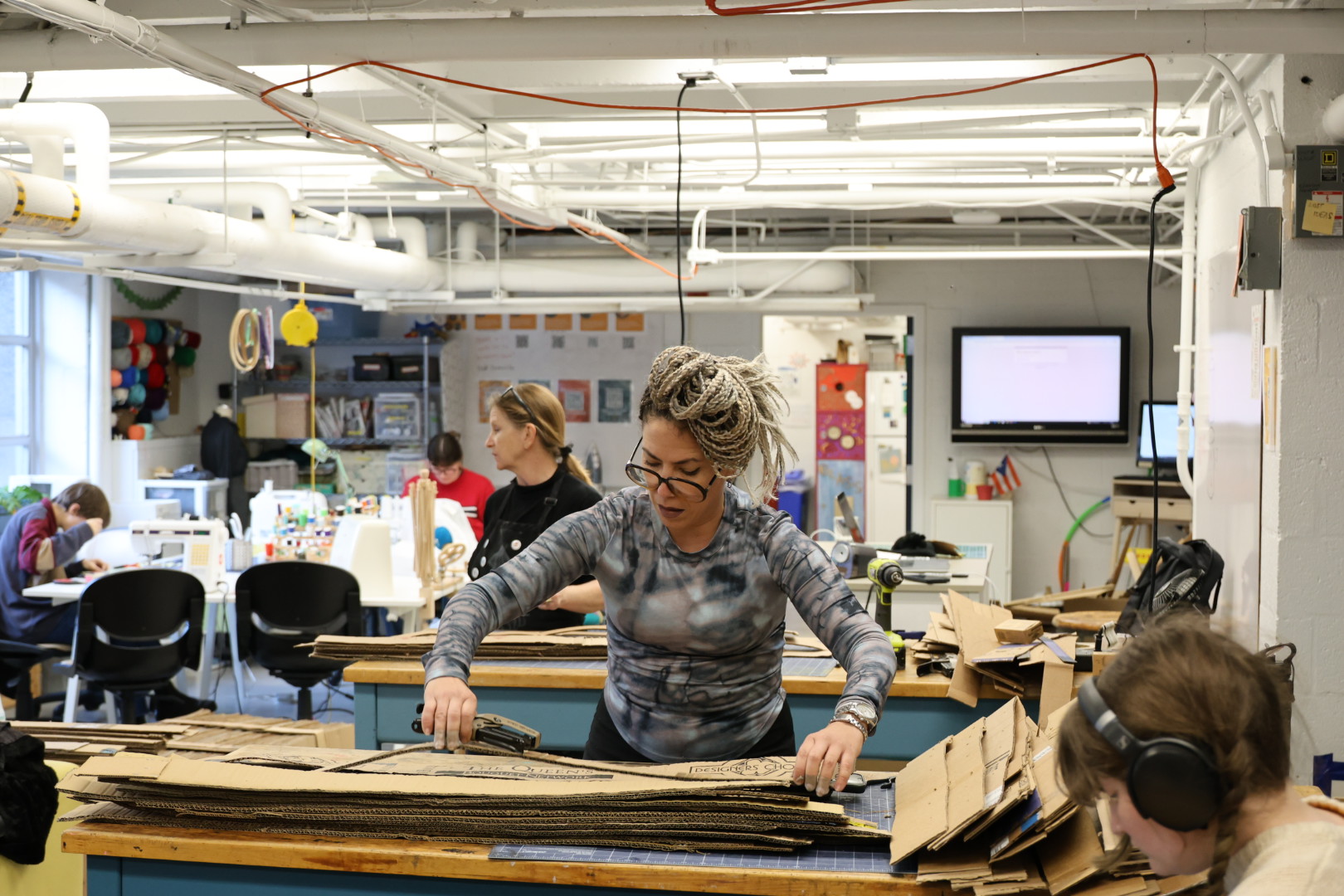Forests have nourished humans for millennia, but struggle has also marked this relationship. The John F. Kennedy Center for Performing Arts invites individuals to explore the complex relationship between forests and the human world at the second edition of their international festival series dedicated to sustainability, REACH to Forest. Last year, the GW Innovation Center (GWIC) worked with Sustainable GW, Dr. Tara Scully, associate professor of biology and director of GW’s Sustainability Minor Program, and Kennedy Center artist-in-residence Celia Ledón to fabricate the art installation, “The Shape of Water,” for the RiverRun festival; they teamed up again this year to create THE-FORESTATION, a towering baobab tree skinned with recovered cardboard and other packing materials.
Beginning in January, GWIC and the Kennedy Center began collecting the shipping cardboard used to fabricate the “bark” of the baobab tree. Following Ledón’s design, students from across the university helped to cut the recycled cardboard into strips by hand and then stapled them together in a honeycomb pattern to be wrapped around the tree’s steel infrastructure. Students also participate on-site with the installation of the honeycomb panels and in bringing the tree’s canopy to life with paper towels and packing material, including green plastic film which represents the leaves.
Repetition is seen everywhere in the natural world. Ledón’s repetitive honeycomb pattern mimics nature in this way, allowing the process of creating the piece to be very collaborative and forgiving. By participating in this project, students were exposed to a design method that is inspired by nature, which director of GWIC Erica Cusi Wortham says is beneficial for all GW students to learn. “Nature is our best teacher, from patterns to cycles and interconnections. Projects like these give students a chance to expand their ‘tactile knowledge’ which has to do with letting your hands, senses, and the relationships we build with materials guide the creative process.”
Standing over 25 feet high in its finished state, the individual steel structures that comprise THE-FORESTATION had to be lifted with a crane to be placed on top of each other. In nature, Madagascar’s endemic baobab tree grows up to 98 feet high and reaches a trunk diameter of up to 33 feet. They are currently endangered due to habitat loss that will continue in the next 70 years.
As climate change and human development continue to threaten forests, this festival and art installation remind us how forests may also be our lifeline from the damaging effects of climate change. Visitors to the Kennedy Center can still view THE-FORESTATION in the Welcome Pavilion of The REACH until March 2, 2024, so don’t miss out on this opportunity to see this amazing piece and explore the importance of forests through art.


